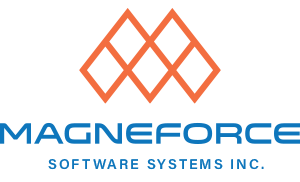Multiple Solution Techniques
Standard
Solver
MagneForce’s primary solver utilizes an iterative approach in which machine magneto-static fields are calculated using Finite Element Analysis (FEA) techniques.
These machine flux linkage profiles are influenced by the winding inductances and the PM generated flux linkages and naturally include the effects of non-linear materials, magnetic saturation, distributed windings, machine slotting and non-sinusoidal voltages and currents. The resultant machine flux linkages, are used in a time domain MagneForce Spice circuit model of the machine and its electronics to calculate the voltages and currents within the entire system.
These newly calculated currents form an updated estimate of the solution and are used again in the FEA calculation. The process continues until convergence is achieved at which point the user can access the entire set of time domain voltage, current and torque waveforms. Iron loss together with a detailed loss separation table is also part of the standard output. This solution technique is fast, computationally efficient, numerically stable and very accurate. The technique can be used to solve machines being driven by 6-Step, PWM and FOC inverters. All analysis is carried out in the abc frame of reference, however results are presented in both the ABC and DQ reference frames in order to facilitate interfacing with machine control theory & techniques.
Transient
Solver
MagneForce’s transient time stepping solver encompasses an all in one (Finite Element and Electronics) solution matrix that is solved on a time stepping basis.
This solver incorporates the machine’s inertia and so can predict the electrical and mechanical response to an input or disturbance. Once the simulation completes MagneForce’s automatic post-processing back-calculates the motor parameters at any point in time. The entire set of time domain voltage, current and torque waveforms together with the Iron loss is calculated.
This technique can also calculate eddy current losses in any solid conducting region such as metal pole pieces, magnet retaining sleeves and magnet tips. This technique incorporates electrical, magnetic and mechanical elements which are solved simultaneously and is necessary for the calculation of the machine’s true transient. This technique is proven stable and accurate in machines operating at normal mains frequency to high frequency aerospace and ship based applications.
Linked and
Specialized
Solvers and
Intermediate
Results Access
MagneForce’s software architecture allows users access to intermediate results.
For example users have access to MagneForce’s calculated magnetic results to be utilized in a total system simulation. In this case the MagneForce is being operated as a detailed machine specific FEA model but with much better accuracy than a simple lumped parameter machine model. Links such as this can be static or dynamic. Special simulator specific solvers such as a T-Circuit solver for induction machines are also included here.
MagneForce allows users access to intermediate results for further analysis and simulation. For example, users who prefer to use MagneForce magnetic results within their own iron loss model can extract this data during the simulation. Further simulation of temperature can be accomplished by dynamic linking of the machine heat sources with a user developed lumped parameter thermal model. In this way, the machine temperatures converge along with the machine magnetic parameters. MagneForce allows users to define their own parametric geometry models and the software provides leading edge indicators for noise and vibration studies. MagneForce outputs the Maxwell Stress Tensor which is often used as a measure of ‘Magnetic Pressure’ in the air-gap near the surface of the stator. This ‘Pressure’ fluctuates or pulsates in time so its waveform and harmonic content is of great interest to designers.
Contact Us
Please feel free to reach out if you have any additional questions about MagneForce Software Systems Inc.


